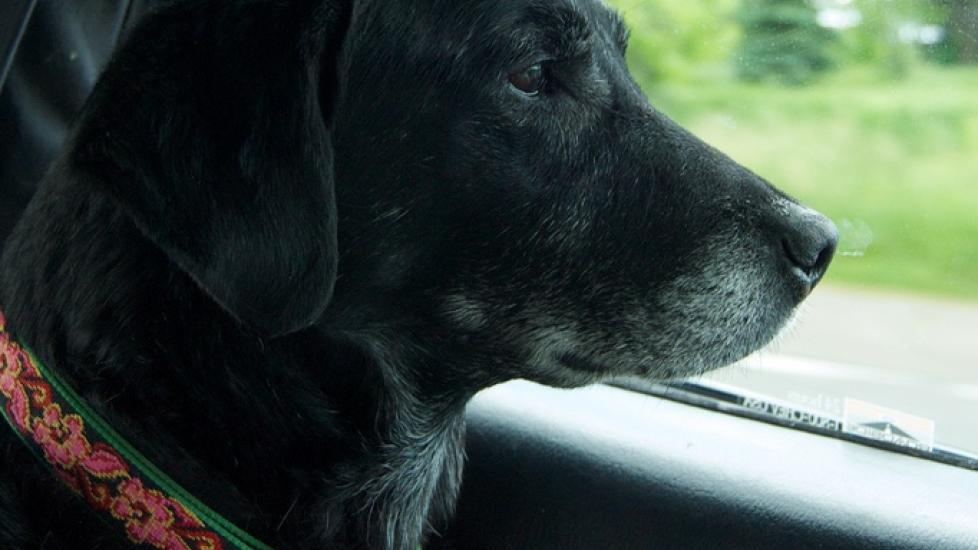Cancer Treatment for Pets: Making the Hardest Decision
For the majority of cases I consult on I’m able to offer some sort of treatment option. Though cure rates in veterinary oncology are low, I think we are able to successfully control many cancers for extended periods of time, while maintaining very low risk for adverse side effects. It’s a fair trade-off given the overriding goal of our profession is to first "do no harm."
Some cancers are certainly more "treatable" than others, meaning there are known statistics surrounding expected response rates, remission times, and survival outcomes. It may seem surprising, but this is the exception rather than the norm. More often, I’m making recommendations with somewhat limited information — this may be because I am working without a definitive diagnosis, or the pet has a rare tumor type where the best therapeutic option is unknown, or the available information is conflicting or not accurately applicable to that pet’s situation. But in general, I feel I’m usually able to offer owners something I would expect to help extend their pet’s quality of life.
There are other cases, however, where I know there are no reasonable available options for that particular animal. One way this can happen is when a pet is presented to me for the first time and their disease is either too widespread and/or the pet is too sick from their cancer and I know despite having an armamentarium of chemotherapy drugs at my disposal, the chance of any kind of success from the treatment is exceedingly low.
This can be a very difficult conversation to have with owners. Sometimes their pet may have only shown signs for literally a few days before they are faced with hearing the grim news there is nothing I think will reasonably help them feel better, breathe better, eat better, etc. Sometimes I think owners just need to hear this from an oncologist — even if other doctors have given them a similar prognosis.
The hardest cases for me are those I’ve treated, sometimes over the course of a year or more, where the animal’s disease progresses despite my best efforts. We can become quite attached to our patients (and their owners) over their "cancer careers" and it is very difficult for us to watch tumors grow and spread, or see the disease come out of remission.
You may assume that as this happens, the dog or cat would be showing increased sickness or debilitation, but this isn’t necessarily the case. Animals with large cancer burdens will still often outwardly appear healthy, making it even harder to discuss with an owner how I feel we are "out of options."
I think the majority of owners are relieved because they no longer feel the pressure of having to try something else for their companion; that by not trying when there are still options they are "giving up" on them. A smaller subset of owners does not fare well with the news, and it’s not unusual to be the target of their anger and fear, as it relates to the grieving process. I try not to take it personally, but it’s difficult.
I know every oncologist will have a different perspective on his or her craft, but it’s my philosophy that if the expected percent success rate of a particular chemotherapeutic is lower than, or close to, the expected rate of an adverse side effect, it’s difficult to strongly recommend using it to treat that animal. Though I definitely believe if an animal is feeling well it is always reasonable to offer treatment, there will come a time for most of these cases when I have to ask the owners and myself, "What is our goal here?" Owners have asked me if I consider myself an "aggressive" oncologist, and it’s always difficult to answer truthfully. I feel I am aggressive when I need to be, but I also need to be able to sleep well at night.
It’s never an easy conversation to have. As veterinarians, we are trained to heal and to help. No matter how unassuming we may appear, our ego drives us to nurture and to fix things. We don’t want to admit defeat to disease, and it is never easy to tell an owner there is nothing we can do. Even as an oncologist who knows the animal before me has a much higher chance of death from its cancer than from any other process, I hate feeling helpless to its condition.
During the time our patients are no longer actively undergoing treatments, but still alive and living with their cancers, I try to emphasize to owners that I am there for them in whatever capacity they need me. Whether it is to assess their pet’s pain level, or to try to use objective parameters to determine their pet’s quality of life, or even just to be there to talk about the difficulties they encounter maintaining their pet’s health during the time off chemotherapy.
Fortunately, more and more veterinarians are recognizing end of life care as its own specialty, and are either incorporating it into their practice or, as some of my colleagues have done, are making it their sole career goal. This means there are more and more fantastic resources available for owners to help them through this difficult time.
Although it can feel as though I am giving up, I try to remember that cancer is an extremely serious disease, and that what is most important is for my patients to have happy times with their families. I think I learn just as much from the true "hospice" portion of my care as I do from the actual active treatment portion. And I learn not only from the animals but from their owners, as well. For me, this is one of the most unpredicted aspects of my career, and something I’m continually surprised by.

Dr. Joanne Intile
Image: Libby on Hospice by Pete Markham / via Flickr
